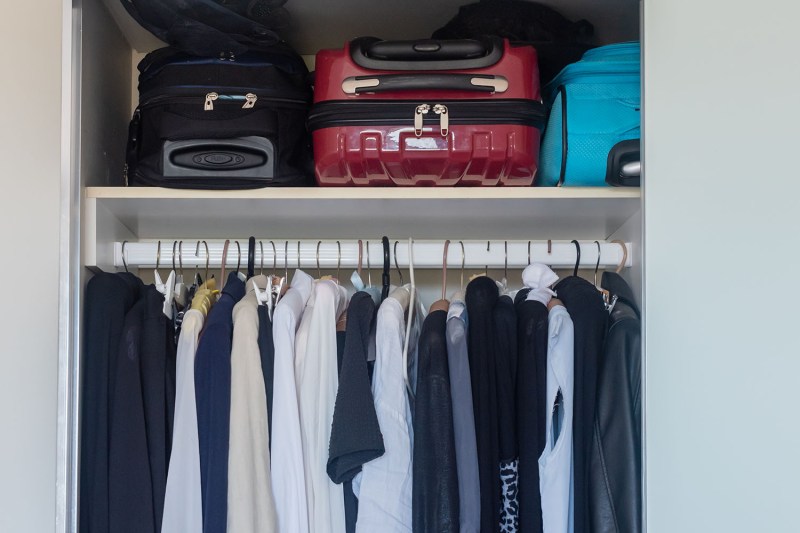For most of us, our travel gear — luggage, dopp kits, toiletry bottles, and our required mess of power plugs and adapters — seems to be in a perpetual state of disorganization. Now that many of us are stuck at home, not currently traveling, and not likely to travel any time soon, there’s never been a better time to organize it all. Here’s a primer on how to properly clean and stow your travel gear.
Where to Start
No matter the trip duration, all of your personal effects will have come in contact with foreign — and very germy — surfaces. Your toiletry bottles will have touched strange hotel bathroom sinks; countless airport employees will have handled your passport; and your phone and laptop will have rested on rarely cleaned airport surfaces. In short, clean just about everything, starting right now and again after each trip.

Clean Your Luggage and Other Travel Wares
Cleaning your luggage might seem strange. It’s something most of us have never considered. Stop to think about all the surfaces those rollaboard wheels and duffel bag bottoms might have touched — airport bathroom floors, filthy tarmacs, and baggage claim conveyor belts — and you’ll quickly realize just how nasty your luggage probably is. Smaller gear and gadgets also come in contact with seatback tray tables, airport security bins, and countless other high-traffic surfaces.
Sanitizing your travel wares isn’t difficult. Just be sure you’re using the right cleaner for the job. Most artificial surfaces — hard-sided suitcases, vinyl Dopp kits, laptop sleeves, electronic accessories, and the like — can be cleaned with household disinfecting wet wipes. For good measure, finish off the cleaning process by spritzing hard goods (be careful with sensitive electronics) with a disinfectant spray like Lysol or Microban. Both are guaranteed to kill 99.9% of germs.
For soft-sided carry-ons, neck pillows, and other soft goods, soap and water is more delicate and cleans just as well as stronger household cleaners. Be sure to spot-test with bleach and peroxide-powered cleaners to avoid staining soft goods. Leather bags should, of course, only be cleaned with dedicated leather cleaning wipes.
All of the above tips make up a comprehensive approach to sanitizing both germs and dirt. If you’re only concerned with the former, however, there’s an easier alternative. After a trip, quarantine your gear in a separate room of the house, like a garage or basement. Leave it for a few days or a week. A sunroom is even better as the heat and UV light provide surefire decontamination for just about all germs.
Amid the current COVID-19 crisis, these tips may seem obvious. However, thoroughly cleaning your travel gear is a good routine to adopt, even absent a global pandemic. There are always plenty of other viruses to contend with, including H1N1, SARS, MARS, and the common flu.
Stow and Organize Your Travel Gear
Of all your travel-related gear, luggage likely takes up the most physical space. For larger hard-sided or rigid suitcases, consider using them to contain other bags. Empty and clean all of your luggage, then nest smaller duffels inside medium-sized carry-ons inside your largest checked bags. With this “Russian nesting doll” method, most travelers can compact their collection down to half or less of the “unnested” individual luggage size. If storage space is at a real premium, consider buying soft-sided or semi-rigid alternatives that fold flat or otherwise compact down to stow under a bed or at the back of a closet.
For occasional travelers, having a Dopp kit is a convenient way to tote your gear while en route and store everything after returning home. The best offer pouches, zippered pockets, and dividers to corral like items. If you keep a stocked kit at the ready, you can grab it and go on your next trip. Frequent travelers with stashes of miniature toiletry bottles and the like may want a small plastic tote or two to store everything in the bathroom while not traveling.
Most travelers pack a handful of cables and cords to power laptops, smartphones, digital cameras, electric razors, and more. If these seem to be cluttering up your luggage and home storage space, consider buying a dedicated tech pouch (most are similar to a Dopp kit) for organizing cables, adapters, and power cords.



